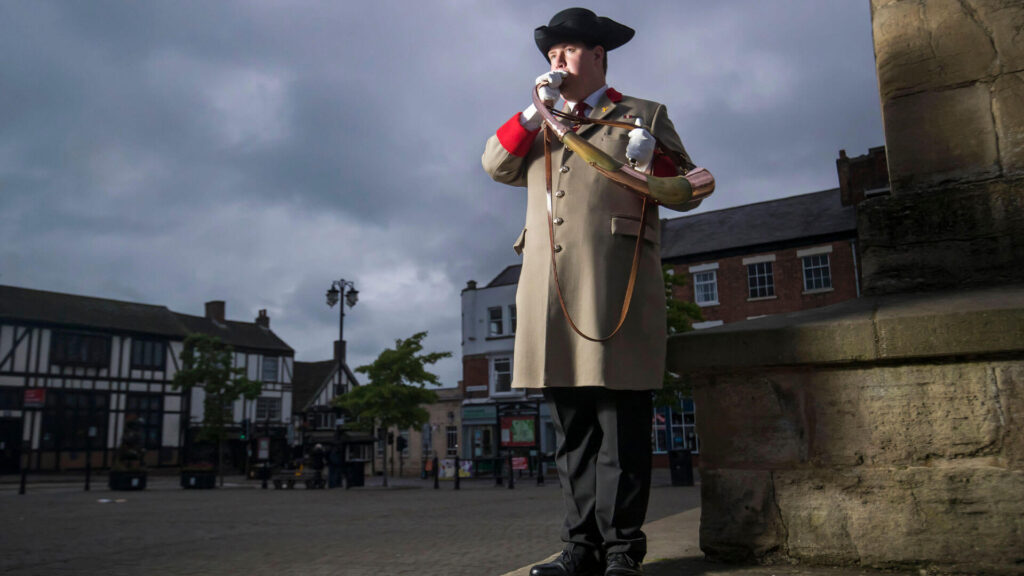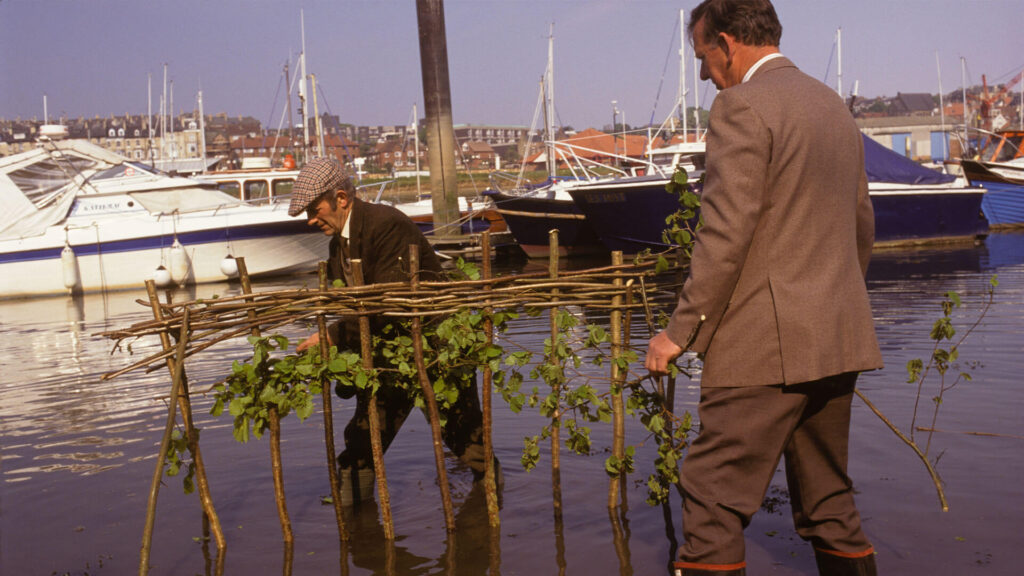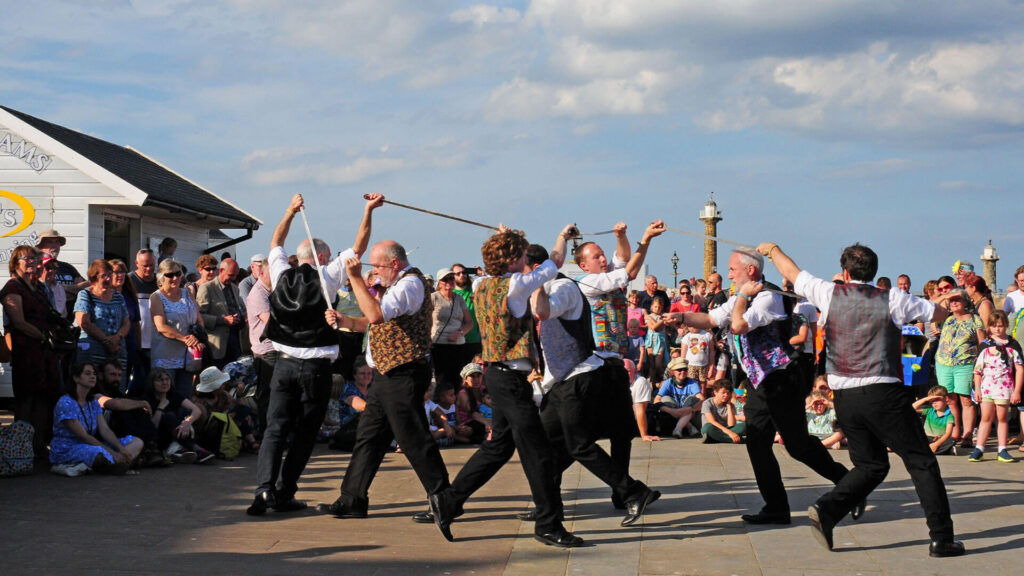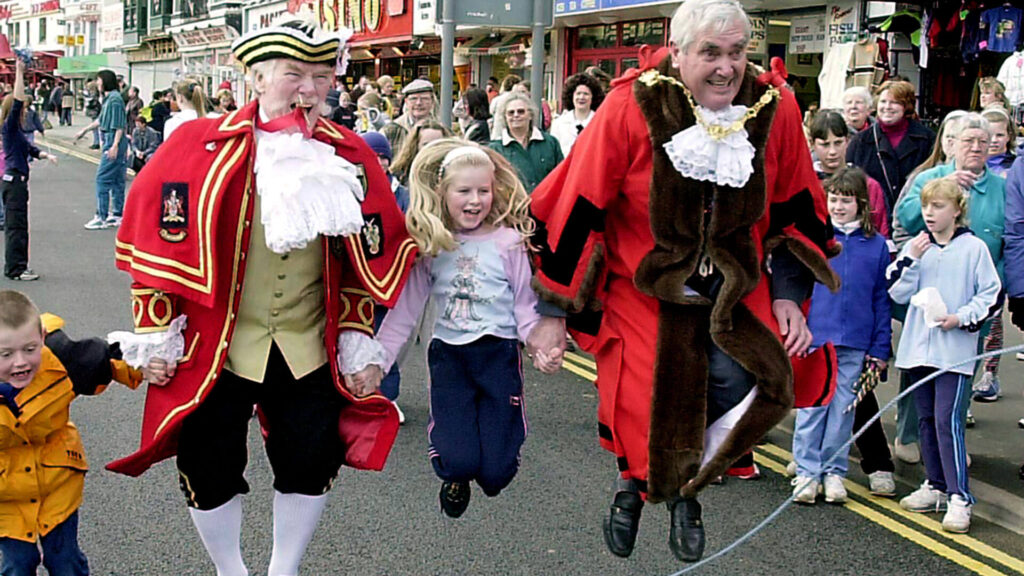6 Curious Customs from Yorkshire
England’s Yorkshire County is steeped in well-known traditions, from the quintessential “Sunday roast” with Yorkshire pudding to centuries-old agricultural shows. But there are other long-standing customs and ceremonies that, while no less dear to locals, may seem more unusual. Learn about the joys of Skipping Day, the penance that is penny hedge planting, and long sword dancing’s mock dangers—all part and parcel of the customs in God’s Own Country.
- 1.
The Ripon Hornblower

Ripon City Hornblower blasts a horn, a centuries-old ceremonial role that started in AD 886 This ear-splitting civic ritual comes alive every single night in the North Yorkshire city of Ripon—and has since 886 AD! At 9pm without fail, a horn is blown at each of Ripon Market’s four corners to “set the watch” and let all know they may sleep soundly. The nearby mayor’s home also gets three prolonged honks as part of the custom. It’s one of the world’s longest ongoing traditions, dating back to when King Alfred the Great granted Ripon a royal charter and advised that locals appoint a “Wakeman” to patrol for pesky Vikings between dusk and dawn.
Today there are four official Ripon Hornblowers including the first woman; it only took 1137 years to appoint her! Listen to a Ripon Hornblower in this video.
- 2.
Planting the Penny Hedge in Whitby

Constructing the Penny Hedge in Whitby, 1990s On the eve of spring’s Ascension Day, the “Planting of the Penny Hedge” (also known as “Ceremony of the Horngarth”) goes down—or in this case, up. Locals from this coastal town build a short fence (or hedge) on the banks of Whitby Harbour using sticks from hazel shrubs. “Nine upright hazel stakes are driven into the mud with an ancient mallet,” according to The Yorkshire Post. “Nine pliant branches known as “yethers” are [intertwined], and the hedge is secured at each end with “strout-stowers.” When that’s done, there are three blasts of a ram’s horn and the supervising baliff’s cry of “Out on ye! Out on ye! Out on ye!”
The ritual dates back to the murder of a monk in 1159. Before the man died, he offered his killers forgiveness if they’d carry out the annual penance of building the hedge using a knife “of a penny price.” Legend claims if the hedge cannot withstand three incoming tides, then bad luck is coming to Whitby. (Seems pretty chancy based on how the fence is constructed!)
- 3.
Long Sword Dancing

Sword dance team moving through patterns in its longsword dance You’d think dancing with swords would come with the same caution as running with scissors, but no! Long Sword Dancing (or Longsword Dancing) goes back hundreds of years in Yorkshire. Teams of six to eight folk dancers move together in a circle, holding the hilt of a sword in their right hand, the person on their right holding the point. (Ouch.) The dancers then move through “figures.” Without breaking the circle, they either go under a sword held aloft by two dancers or over a sword held low to the ground. The blades are interwoven at one point, the sword “lock” is held high and then placed around the neck of one dancer in mock decapitation. But never fear, the “beheaded” dancer is quickly revived.
Villages have their own unique long sword dance steps, music, and costumes. The dances are typically performed in mid-winter and have roots in ancient rites of death and renewal. Watch a team traditional dancers in this video.
- 4.
Scarborough’s Skipping Day

Skipping Day is celebrated annually on Shrove Tuesday during Lent Imagine an entire town taking the afternoon off to jump rope! Well, the North Yorkshire resort town of Scarborough really has such an annual tradition on Shrove Tuesday; the custom dates back to at least 1903. It’s said to originate from an older celebration known as “Ball Day,” when apprentices and servants were given a half-day off during Lent and played games on the beach that included skipping old fishing ropes. Today, many schools participate in Skipping Day, and hundreds of adults also take part.
Watch some rare older footage of Skipping Day from the Ryedale Folk Museum (UK).
- 5.
World Coal Carrying Championship

Participants in the World Coal Carrying Championships in Gawthorpe, Yorkshire This event is a long-running (pun intended) Easter tradition in the West Yorkshire village of Gawthorpe, and a tribute to the area’s coal mining past. Inspiration for the competition occurred in a spot where many offbeat schemes occur: the pub. It seems two gentlemen’s debate over who was more fit got decided by a race with each carrying coal.
Today, the competition sees separate racing heats where women and men impressively bear 44- and 110-pound sacks of coal (respectively) over their shoulders, trying to be first over the finish line some 1100 yards away. The standing course records are four minutes six seconds for the lads and four minutes 25 seconds for the lassies, according to the championship’s official website.
- 6.
The Great Knaresborough Bed Race

The Great Knaresborough Bed Race passing along Knaresborough High Street (left) and crossing the River Nidd (right) The hardy tradition that is Knaresborough’s bed race began in 1966 and has grown into a very competitive event over its almost 60 years. Participating teams run a grueling 2.4-mile course, pulling their elaborately designed “beds on wheels” over meadows, cobblestone streets, and through the always-nippy River Nidd in the North Yorkshire town. The race welcomes 90-some teams of six runners (plus a passenger on the bed). It becomes a whole town effort as local odd-jobbers and dressmakers get involved in decorating the beds and costuming the runners. According to the official race website, “the fastest teams do the course in around 14 minutes. … Runners have to be fit, fanatical, and frankly a bit mad.”



























